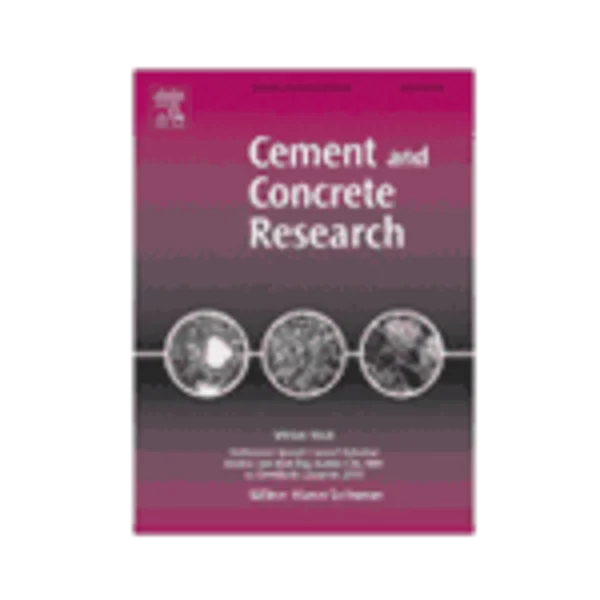-
incorporation of trace elements in portland cement clinker: thresholds limits for cu, ni, sn or zn
جزئیات بیشتر مقاله- تاریخ ارائه: 1392/07/24
- تاریخ انتشار در تی پی بین: 1392/07/24
- تعداد بازدید: 1089
- تعداد پرسش و پاسخ ها: 0
- شماره تماس دبیرخانه رویداد: -
this paper aims at defining precisely, the threshold limits for several trace elements (cu, ni, sn or zn) which correspond to the maximum amount that could be incorporated into a standard clinker whilst reaching the limit of solid solution of its four major phases (c3s, c2s, c3a and c4af). these threshold limits were investigated through laboratory synthesised clinkers that were mainly studied by x-ray diffraction and scanning electron microscopy. the reference clinker was close to a typical portland clinker (65% c3s, 18% c2s, 8% c3a and 8% c4af). the threshold limits for cu, ni, zn and sn are quite high with respect to the current contents in clinker and were respectively equal to 0.35, 0.5, 0.7 and 1 wt.%. it appeared that beyond the defined threshold limits, trace elements had different behaviours. ni was associated with mg as a magnesium nickel oxide (mgnio2) and sn reacted with lime to form a calcium stannate (ca2sno4). cu changed the crystallisation process and affected therefore the formation of c3s. indeed a high content of cu in clinker led to the decomposition of c3s into c2s and of free lime. zn, in turn, affected the formation of c3a. ca6zn3al4o15 was formed whilst a tremendous reduction of c3a content was identified. the reactivity of cements made with the clinkers at the threshold limits was followed by calorimetry and compressive strength measurements on cement paste. the results revealed that the doped cements were at least as reactive as the reference cement.
مقالات جدیدترین رویدادها
-
استفاده از تحلیل اهمیت-عملکرد در ارائه الگوی مدیریت خلاقیت سازمانی و ارائه راهکار جهت بهبود
-
بررسی تاثیر ارزش وجوه نقد مازاد بر ساختار سرمایه شرکت های پذیرفته شده در بورس اوراق بهادار تهران
-
بررسی تأثیر سطح افشای ریسک بر قرارداد بدهی شرکت های پذیرفته شده در بورس اوراق بهادار تهران
-
بررسی تأثیر رتبه بندی اعتباری مبتنی بر مدل امتیاز بازار نوظهور بر نقد شوندگی سهام با تأکید بر خصوصی سازی شرکت ها
-
تأثیر آمیخته بازاریابی پوشاک ایرانی بر تصویر ذهنی مشتری پوشاک ایرانی (هاکوپیان)
-
نگرشی به جلوه های سنت خانه های تهران عهد قاجار با تاکید بر فضاهای ورودی
-
بررسی عوامل موثر بر زنجیره تأمین تاب آور (مطالعه موردی: شرکت چینی بهداشتی مروارید یزد)
-
تحلیل اثرات فرهنگ سازمانی بر فرسودگی شغلی کارکنان و ارائه راهکارهای مناسب (بر اساس مدل دنیسن)
-
nonlinear systems with singular vector ϕ-laplacian under the hartman-type condition
-
hybrid neural networks as tools for predicting the phase behavior of colloidal systems
مقالات جدیدترین ژورنال ها
-
مدیریت و بررسی افسردگی دانش آموزان دختر مقطع متوسطه دوم در دروان کرونا در شهرستان دزفول
-
مدیریت و بررسی خرد سیاسی در اندیشه ی فردوسی در ادب ایران
-
واکاوی و مدیریت توصیفی قلمدان(جاکلیدی)ضریح در موزه آستان قدس رضوی
-
بررسی تاثیر خلاقیت، دانش و انگیزه کارکنان بر پیشنهادات نوآورانه کارکنان ( مورد مطالعه: هتل های 3 و 4 ستاره استان کرمان)
-
بررسی تاثیر کیفیت سیستم های اطلاعاتی بر تصمیم گیری موفق در شرکتهای تولیدی استان اصفهان (مورد مطالعه: مدیران شرکتهای تولیدی استان اصفهان)
-
تاثیر تغییرات اقلیمی بر اکوتوریسم شهر خرم آباد
-
ارزیابی تأثیر آموزش تمدد اعصاب (ریلکسیشن) بر بیماری های روانی و کاهش استرس در زنان
-
خوانش هویت شهری با تأکید بر ارزش های فرهنگی نهفته در خاطرات-جمعی شهروندان (مطالعۀ موردی: شهر بجنورد)
-
بررسی اثر رفتار سرمایه گذاران بر رابطه بین ثبات مدیریتی و ارتباطات سیاسی در شرکت های پذیرفته شده در بورس اوراق بهادار تهران
-
بررسی رابطه سبک رهبری توزیعی مدیران با عملکرد شغلی کارکنان بانک ملی استان آذربایجان غربی




سوال خود را در مورد این مقاله مطرح نمایید :